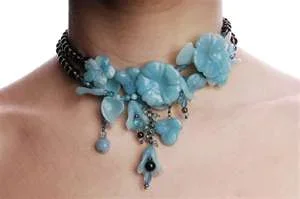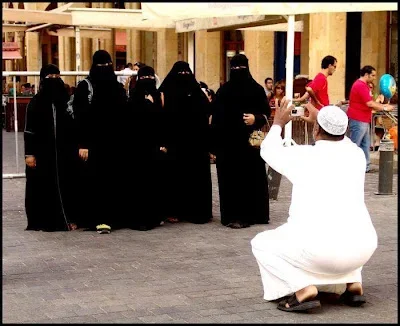prasad1
Active member
Customs depends on place and time. By adding religion to a custom, we try to give it more significance. The traditional way to enforce a custom we put guilt on the followers. This is common in all society. Generally it is the dominent group that wants to control others who become the cultural police.
http://www.iloveindia.com/indian-traditions/bindi.html
Bindi
Bindi can usually be described as a traditional red circular mark or dot worn by the Indian women on their forehead. When this is accompanied by a vermillion mark on the parting of hair just above the forehead, it indicates that the particular lady is married. The term 'bindi' is derived from the Sanskrit word 'bindu' meaning "a drop or a small dot or particle". Even though traditionally, bindi is a red colored dot, it can be worn in other colors also, like yellow, orange and so on. The shape and size of the bindi can also vary.
Conventionally, it's the Hindu married women who wear bindi. But, this mark can have several meanings and so, you may also see unmarried girls and even children wearing it. It's the occasion, the color of the bindi and its shape that determines what it denotes. The customary bindi is made with red sindoor powder. The bindi is called the tilak when it's applied on the forehead of a person, at the conclusion of a religious function or havan.
The purpose of wearing a bindi can also vary. If it covers the entire forehead in three horizontal lines, then it denotes the wearer is an ascetic or belongs to a particular sect (like Brahmin). Sometimes, the bindi is used for mere beautification purpose by females. In this case, you may also find her wearing a small jewelry instead of the typical red dot. Though in India, a widow cannot wear a vermillion, she is free to sport a bindi.
Bindi is called by different names in different languages of India. Thus, alternative names for bindi is Pottu in Tamil and Malayalam, Tilak in Hindi, Bottu or Tilakam in Telugu, Bottu or Tilaka in Kannada and Teep meaning "a pressing" in Bengali. Sometimes, the terms sindoor, kumkum, or kasturi are used depending upon the ingredients used in making the Bindi mark. Thus, this article provides you a brief idea about what is bindi.
http://hinduism.about.com/od/bindis/a/bindi.htm
In southern India, girls choose to wear a bindi, while in other parts of India it is the prerogative of the married woman. A red dot on the forehead is an auspicious sign of marriage and guarantees the social status and sanctity of the institution of marriage. The Indian bride steps over the threshold of her husband's home, bedecked in glittering apparels and ornaments, dazzling the red bindi on her forehead that is believed to usher in prosperity, and grants her a place as the guardian of the family's welfare and progeny.
http://www.saywhydoi.com/bindis-why-do-indians-wear-a-red-dot-on-their-forehead/
Access to spiritual planes: The chakras that are higher up in the body are said to be more closely connected with subtle energy where deities and other powerful spiritual powers dwell. Along with the other reasons described, this is another one of the reasons you’ll often see Hindu priests wearing a bindi-like mark on their forehead. Marking this spot is also common for both men and women during many religious times in Hinduism including during ritual worship (called Puja). Superstitious folk believe that the third eye’s spiritual nature means that a bindi in this location can protect one from negative energies.
Access to kundalini energy: According to Vedic scriptures, each chakra center contains special energy called kundalini energy. When a chakra is open it can leak out energy. The bindi is said to protect against energy loss and strengthen the energy in the third eye and of the body in general.
If this is the true meaning then why only married women were "required" to wear it.
You can justify any position on the basis of your interpretation of "religion".
http://www.iloveindia.com/indian-traditions/bindi.html
Bindi
Bindi can usually be described as a traditional red circular mark or dot worn by the Indian women on their forehead. When this is accompanied by a vermillion mark on the parting of hair just above the forehead, it indicates that the particular lady is married. The term 'bindi' is derived from the Sanskrit word 'bindu' meaning "a drop or a small dot or particle". Even though traditionally, bindi is a red colored dot, it can be worn in other colors also, like yellow, orange and so on. The shape and size of the bindi can also vary.
Conventionally, it's the Hindu married women who wear bindi. But, this mark can have several meanings and so, you may also see unmarried girls and even children wearing it. It's the occasion, the color of the bindi and its shape that determines what it denotes. The customary bindi is made with red sindoor powder. The bindi is called the tilak when it's applied on the forehead of a person, at the conclusion of a religious function or havan.
The purpose of wearing a bindi can also vary. If it covers the entire forehead in three horizontal lines, then it denotes the wearer is an ascetic or belongs to a particular sect (like Brahmin). Sometimes, the bindi is used for mere beautification purpose by females. In this case, you may also find her wearing a small jewelry instead of the typical red dot. Though in India, a widow cannot wear a vermillion, she is free to sport a bindi.
Bindi is called by different names in different languages of India. Thus, alternative names for bindi is Pottu in Tamil and Malayalam, Tilak in Hindi, Bottu or Tilakam in Telugu, Bottu or Tilaka in Kannada and Teep meaning "a pressing" in Bengali. Sometimes, the terms sindoor, kumkum, or kasturi are used depending upon the ingredients used in making the Bindi mark. Thus, this article provides you a brief idea about what is bindi.
http://hinduism.about.com/od/bindis/a/bindi.htm
In southern India, girls choose to wear a bindi, while in other parts of India it is the prerogative of the married woman. A red dot on the forehead is an auspicious sign of marriage and guarantees the social status and sanctity of the institution of marriage. The Indian bride steps over the threshold of her husband's home, bedecked in glittering apparels and ornaments, dazzling the red bindi on her forehead that is believed to usher in prosperity, and grants her a place as the guardian of the family's welfare and progeny.
http://www.saywhydoi.com/bindis-why-do-indians-wear-a-red-dot-on-their-forehead/
Access to spiritual planes: The chakras that are higher up in the body are said to be more closely connected with subtle energy where deities and other powerful spiritual powers dwell. Along with the other reasons described, this is another one of the reasons you’ll often see Hindu priests wearing a bindi-like mark on their forehead. Marking this spot is also common for both men and women during many religious times in Hinduism including during ritual worship (called Puja). Superstitious folk believe that the third eye’s spiritual nature means that a bindi in this location can protect one from negative energies.
Access to kundalini energy: According to Vedic scriptures, each chakra center contains special energy called kundalini energy. When a chakra is open it can leak out energy. The bindi is said to protect against energy loss and strengthen the energy in the third eye and of the body in general.
If this is the true meaning then why only married women were "required" to wear it.
You can justify any position on the basis of your interpretation of "religion".
Last edited:




